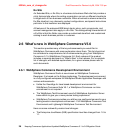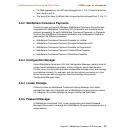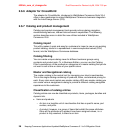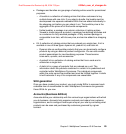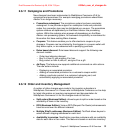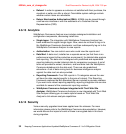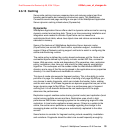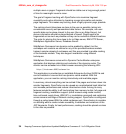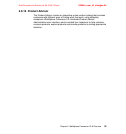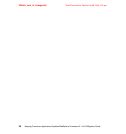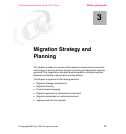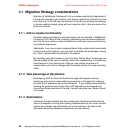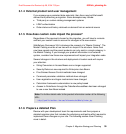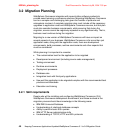6320ch_sum_of_changes.fm Draft Document for Review July 28, 2004 7:33 pm
34 Keeping Commerce Applications Updated WebSphere Commerce 5.1 to 5.6 Migration Guide
multiple users or pages. Fragments should be stable over a long enough period
of time for meaningful reuse to occur.
The goal of fragment caching with DynaCache is to maximize fragment
reusability and cache utilization by breaking a page into smaller and simpler
page fragments. This makes any caching, even a highly dynamic page, possible.
The caching should take place as close to the user as possible, taking into
consideration security and personalized data factors. For example, non-user
specific data can be place closest to the user (like on an Edge Server), but
secure information should be placed behind a firewall. Pages need to be
fragmented out as much as possible so they can be cached at different locations.
The order for placing this from close to far is: Edge server, IBM HTTP Server,
WebSphere Application Server, Database Server.
WebSphere Commerce has dynamic cache enabled by default, but the
cachespec.xml contains no entries for any of the provided business models.
Instead, sample subsets of cachespec.xml files are provided to enable caching
of the business models. They also support invalidation using different
techniques.
WebSphere Commerce comes with a Dynamic Cache Monitor enterprise
application that displays statistics and contents of the dynamic cache. The
monitor can be accessed via a Web browser accessing the following URL:
https://<hostname>:8002/cachemonitor
This application is provided as an installable Enterprise Archive (EAR) file and
can be installed in a server that has dynamic cache enabled. With this
application, you can monitor caching interactively and invalidate pages.
In summary, almost everything can be cached if the pages are broken down into
smaller fragments. DynaCache can be viewed as a sophisticated hash table that
can increase performance and reduce infrastructure costs. Among its many
features include the ability to off load caching from memory to disk, full page and
fragment caching, invalidation support (either manual using cache monitor,
time-out based, event driven, WAS API, or invalidation command) and replication
across servers and Edge of Network caching support. DynaCache is configured
through a policy-based XML file called cachespec.xml. Some factors to consider
on deciding what to cache include reusability, invalidation and variations of the
JSP fragments. Finally, for best performance, caching should be placed as close
to the user as possible.



